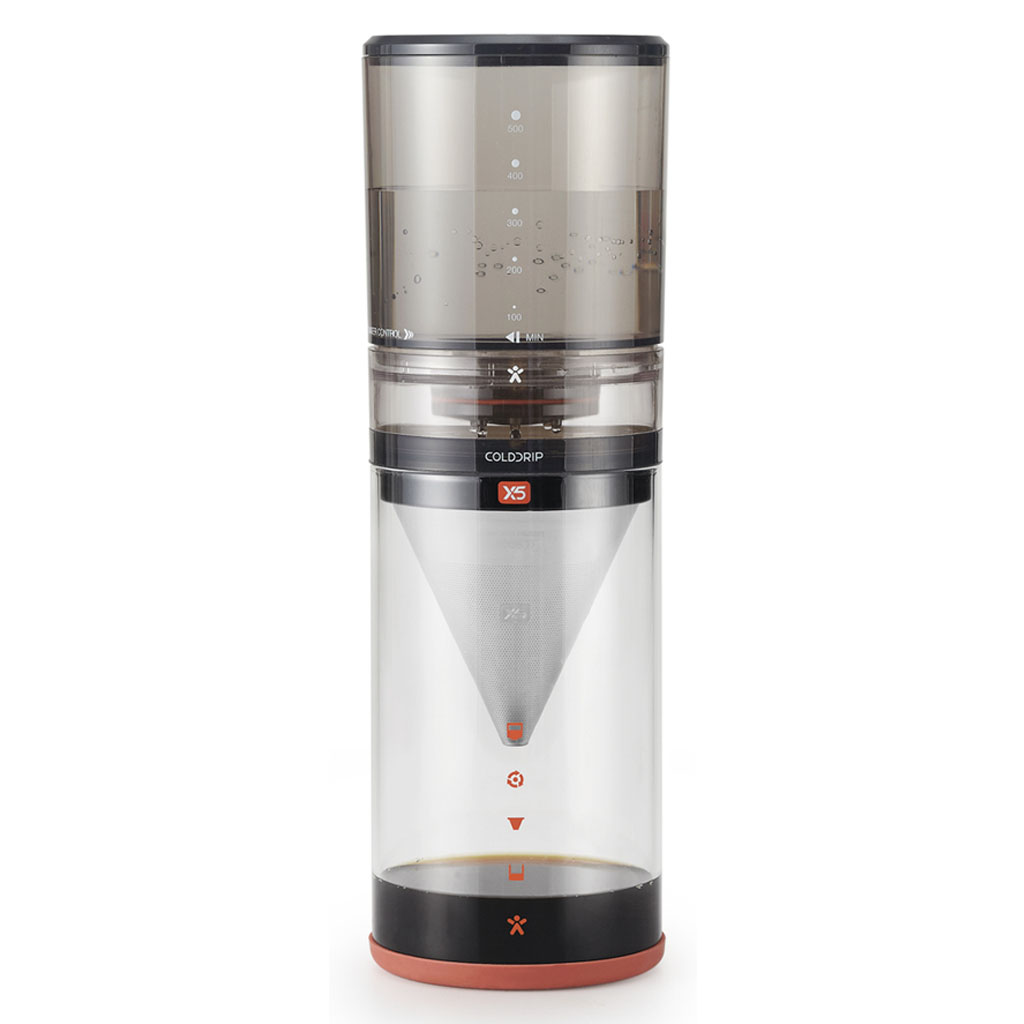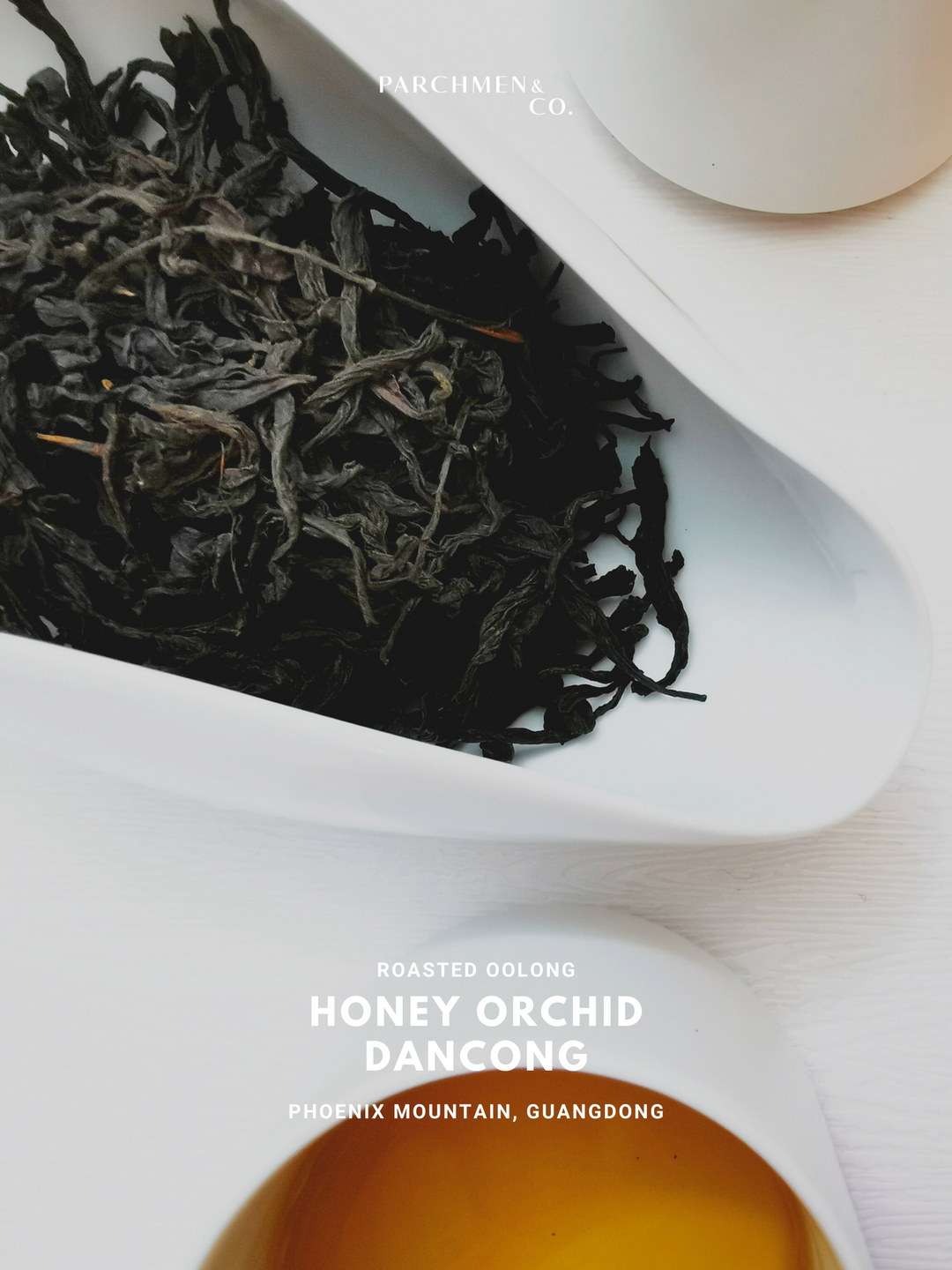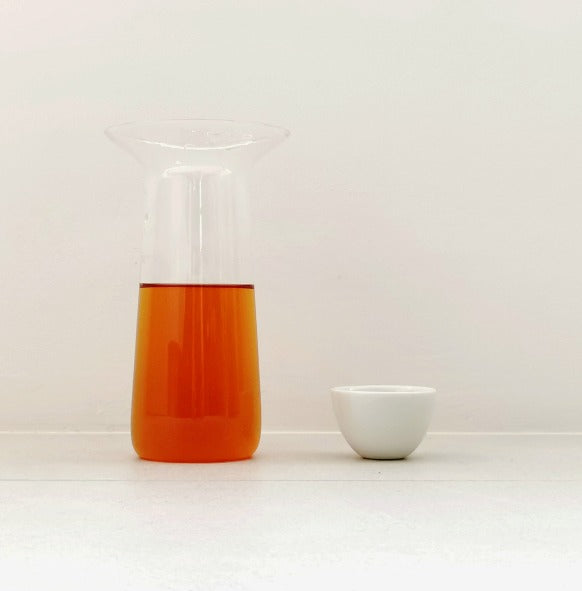2023 Spring Wudong Mt Honey Orchid Dancong 凤凰单丛蜜兰香
- In stock, ready to ship
- Inventory on the way
The Chaozhou region east of Guangdong province neighbouring Fujian province is famous for dancong made into wulong tea, with a history spanning 900 years of history since the last years of the Southern Song dynasty. North of Chaozhou is the Phoenix Mountain range, with the highest peak at 1,500 m. It is so named because the mountain range looks like a wide base diamond shape, resembling a soaring phoenix with its wings extended. There are numerous peaks within the range, one of it is Wudong Mountain (乌岽山) which is the second highest peak at 1,400 m. At the peak of Wudong Mountain is the Heavenly Lake (天池), which is a crater lake of a dormant volcano. Volcanic soils are usually nitrogen rich, and teas grown from such soils are usually thick and syrupy.
Tea from Guangdong was always in the shadow of its more famous neighbour Fujian. In the 19th century when the British were importing loads of tea from China, export records listed a tea called Canton Bohea (广东武夷), literally meaning Bohea-style tea made in Canton, Bohea referring to Wuyi Mountain north of Fujian province and Canton referring to Guangdong province. Purchase of Chinese teas were the exclusive rights of the British East India Company during that time, and part of that was supplied to the British court and other royalties. Guangdong tea in its own name became more widely known only during the Qing dynasty, with the main tea cultivation areas taking shape to what we see today. After the 2nd Opium War in the mid 19th century, the term Dancong (单丛) - translated as single bush - was first used to refer to teas from Guangdong. This is probably to the credit of the chief general of the area in 1662 when he saw wild tea trees in the area and ordered organised tea cultivation on Wudong Mountain and harvesting from single bushes that bore specific aromas.
Teas from Phoenix Mountain are now known as Fenghuang Dancong teas, literally Phoenix (Mountain) single bush teas. The biodiversity of the mountains and the micro-regions created by the different spurs of the range have allowed the natural conditions for the wild tea trees to crossbreed with other plants, developing differences in physical appearances as well as flavour characteristics. Through selection in the last few decades and supported by the maturity of cloning techniques, cultivars with differentiated aroma types were identified and mother trees were isolated. Cloning was done repeatedly to achieve stability in the cultivar, which formed the spectrum of aroma types in the Phoenix teas we know today. Since the cultivars were all cloned from selected single mother bushes, the term Dancong continue to apply.
The Honey Orchid (蜜兰香) is undoubtedly the most famous of all Phoenix Mountain dancong cultivars. It is known for its honey and orchid notes, accompanied by lychee and sweet longan notes, and smooth syrupy mouthfeel. This young tea master inherited the tea-making techniques from his forefathers to preserve the traditional ways of making dancong wulong teas. Known as the champagne of teas, Wudong Mountain dancong combines the best of both red teas and green teas, and it reminds us of the local desert 'chng teng' which can be drunk hot or iced.
We are brewing the tea using gongfu style in an Authority zisha teapot. With 6 gm of tea, we are using 88-90°C water and keeping each steep at 10 sec. Such a brewing method prevents bitterness and astringency, both which are inherent characteristics of Fenghuang Dancong tea cultivars. As compared to a longer steep which presents the full representative profile from the tea in one to two brews, the gongfu style brewing method allows the changing flavour of the tea for up to 10 brews, with sweetness dominating the first brew, strong aromas from the second brew, and fading off to the basic tea flavours towards the end. We enjoy its complex aromas of honey, orchid, lychee, caramelised ginger, harmonised by the round, thick and sweet body giving us the impression of longan soup.
We have other version of this famous tea, made into red tea and white tea, and in the styles of tea bag, coin and biscuit. Find out more here.
Packed in 50g loose leaves in tea caddy.
| Origin | Wudong Mt, Guangdong, China |
| Cultivar | Old Trees Shui Xian |
| Processing | Charcoal Roasted Oolong |
3g to 150ml
85°C at 45sec, subsequent brew less 5 degrees and increase by 15s.









